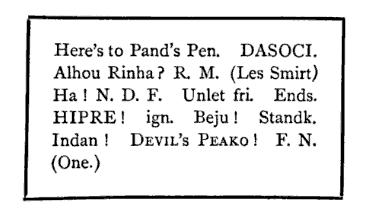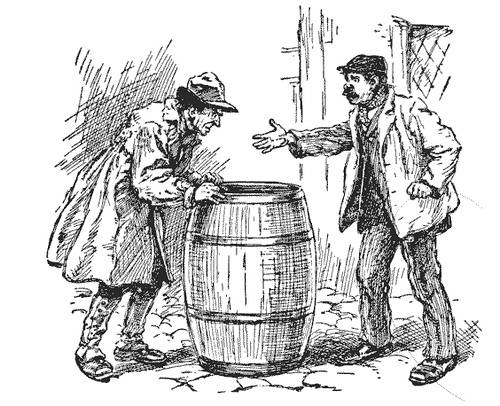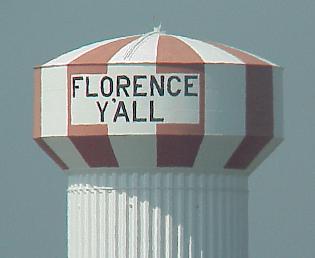If you were a British soldier in Malta in the 19th century, you might receive this card from a local dram-shop:

What does it mean?
If you were a British soldier in Malta in the 19th century, you might receive this card from a local dram-shop:

What does it mean?
SIR,—In reference to your paragraph in your yesterday’s issue [of the Malacca Straits Times Overland Journal], relating to our having seen a sea-monster answering to the popular notion of a sea-serpent, I am prepared to vouch for the correctness of the statement already made to you by the doctor and a passenger by my ship.
Being on the bridge at the time (about 10 A.M.) with the first and third officers, we were surprised by the appearance of an extraordinary monster going in our course, and at an equal speed with the vessel, at a distance from us of about six hundred feet. It had a square head and a dragon black and white striped tail, and an immense body, which was quite fifty feet broad when the monster raised it. The head was about twelve feet broad, and appeared to be occasionally, at the extreme, about six feet above the water. When the head was placed on a level with the water, the body was extended to its utmost limit to all appearance, and then the body rose out of the water about two feet, and seemed quite fifty feet broad at those times. The long dragon tail with black and white scales afterwards rose in an undulating motion, in which at one time the head, at another the body, and eventually the tail, formed each in its turn a prominent object above the water.
The animal, or whatever it may be called, appeared careless of our proximity, and went our course for about six minutes on our starboard side, and then finally worked round to our port side, and remained in view, to the delight of all on board, for about half an hour. His length was reckoned to be over two hundred feet.
JOHN W. WEBSTER,
Commander, S.S. Nestor.
Singapore, 18th September 1876.

What’s odd about this sonnet, composed in 1936 by David Shulman?
A hard, howling, tossing water scene.
Strong tide was washing hero clean.
“How cold!” Weather stings as in anger.
O Silent night shows war ace danger!
The cold waters swashing on in rage.
Redcoats warn slow his hint engage.
When star general’s action wish’d “Go!”
He saw his ragged continentals row.
Ah, he stands – sailor crew went going.
And so this general watches rowing.
He hastens – winter again grows cold.
A wet crew gain Hessian stronghold.
George can’t lose war with’s hand in;
He’s astern – so go alight, crew, and win!
Each line is an anagram of WASHINGTON CROSSING THE DELAWARE.
diamerdis
n. a man who is covered in feces
Imagine a large sheet of rice paper one-thousandth of an inch thick. Tear it in half and stack the pieces, then tear the stack in half and stack those, and so on. If you could do this 50 times in succession, how tall would the final stack be?
A. 0.6 inches
B. 22.84 feet
C. 17 million miles
Surprisingly, the answer is 17 million miles:
250 ply × 0.001 inches/ply
= 1.12589991 × 1012 inches
= 17,769,884.9 miles

From Amusements in Mathematics by Henry Ernest Dudeney (1917):
The men in the illustration are disputing over the liquid contents of a barrel. What the particular liquid is it is impossible to say, for we are unable to look into the barrel; so we will call it water. One man says that the barrel is more than half full, while the other insists that it is not half full. What is their easiest way of settling the point? It is not necessary to use stick, string, or implement of any kind for measuring. I give this merely as one of the simplest possible examples of the value of ordinary sagacity in the solving of puzzles. What are apparently very difficult problems may frequently be solved in a similarly easy manner if we only use a little common sense.

The water tower in Florence, Ky., originally advertised the Florence Mall.
That violated regulations, though, and they had to change it to something …
Some years ago there was a cat-concert held in Paris. It was called ‘Concert Miaulant,’ from the mewing of the animals. They were trained by having their tails pulled every time a certain note was struck, and the unpleasant remembrance caused them to mew each time they heard the sound again.
— Frank H. Stauffer, The Queer, the Quaint and the Quizzical, 1882

Japanese student Masujiro Kiru found this photo in a scrapbook left by his father. Apparently the scene is Tsientsien Street in Hopeh, China, around 1942. UFO enthusiasts note that two people appear to be pointing to an object in the sky. It could be a bird, it could be a hat, it could be man-lizards from Aldebaran. You decide.
“See what will happen if you don’t stop biting your fingernails?” — Will Rogers, to his niece on seeing the Venus de Milo